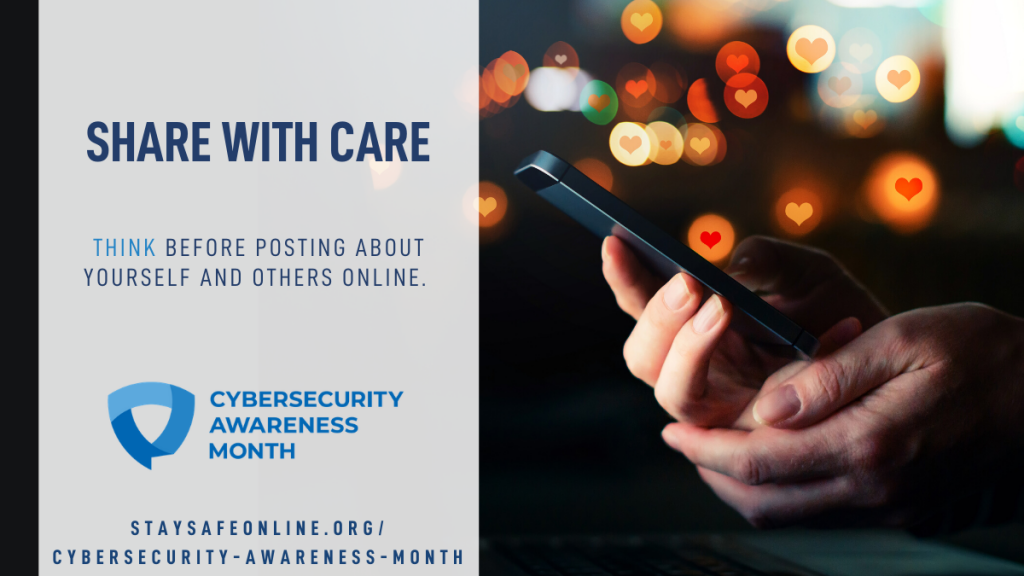Now more than ever, consumers spend increasing amounts of time on the Internet. With every social media account you sign up for, every picture you post, and status you update, you are sharing information about yourself with the world. How can you be proactive and “Do Your Part. #BeCyberSmart”? Take these simple steps to connect with confidence and safely navigate the social media world.
Did You Know?
• In 2020 3.81 billion people worldwide now use social media worldwide. That’s an increase of more than 9% from 2019. Put another way: 49% of the total world population are using social networks.
• Digital consumers spend nearly 2.5 hours on social networks and social messaging every day.
Simple Tips
• If You Connect IT, Protect IT. Whether it’s your computer, smartphone, game device, or other network devices, the best defense against viruses and malware is to update to the latest security software, web browser, and operating systems. Sign up for automatic updates, if you can, and protect your devices with anti-virus software. Read our upcoming phishing post for more information.
• Never click and tell. Limit what information you post on social media—from personal addresses to where you like to grab coffee. What many people don’t realize is that these seemingly random details are all that criminals need to know to target you, your loved ones, and your physical belongings—online and in the real world. Keep Social Security numbers, account numbers, and passwords private, as well as specific information about yourself, such as your full name, address, birthday, and even vacation plans. Disable location services that allow anyone to see where you are—and where you aren’t—at any given time.
• Speak up if you’re uncomfortable. If a friend posts something about you that makes you uncomfortable or you think is inappropriate, let them know. Likewise, stay open-minded if a friend approaches you because something you’ve posted makes him or her uncomfortable. People have different tolerances for how much the world knows about them, and it is important to respect those differences. Don’t hesitate to report any instance of cyberbullying you see.
• Report suspicious or harassing activity. Work with your social media platform to report and possibly block harassing users. Report an incident if you’ve been a victim of cybercrime. Local and national authorities are ready to help you.
• Remember, there is no ‘Delete’ button on the Internet. Share with care, because even if you delete a post or picture from your profile seconds after posting it, chances are someone still saw it and that person may have even made a screenshot or recording of it.
• Update your privacy settings. Set the privacy and security settings to your comfort level for information sharing. Disable geotagging, which allows anyone to see where you are—and where you aren’t—at any given time.
• Connect only with people you trust. While some social networks might seem safer for connecting because of the limited personal information shared through them, keep your connections to people you know and trust.

This content is provided by the U.S. Department of Homeland Security and is part of Georgia Highlands College’s outreach campaign for National Cybersecurity Awareness Month. You can view a printable version of this content by visiting https://www.cisa.gov/sites/default/files/publications/NCSAM_SocialMediaCybersecurity_2020.pdf